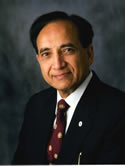Malignant minor salivary gland tumors of the larynx Journal Article
| Authors: | Ganly, I.; Patel, S. G.; Coleman, M.; Ghossein, R.; Carlson, D.; Shah, J. P. |
| Article Title: | Malignant minor salivary gland tumors of the larynx |
| Abstract: | Objective: To report our experience in treating patients with malignant minor salivary gland tumors of the larynx. Design: Thirty-three-year retrospective study. Setting: Tertiary referral center specializing in head and neck surgery. Patients: Twelve patients with malignant minor salivary gland tumors of the larynx were identified from a search of the institutional databases and pathology records at Memorial Sloan-Kettering Cancer Center, New York, NY, between the years 1970 and 2003. All slides were independently reviewed by 2 pathologists (R.G. and D.C.). Details on patient and tumor characteristics, as well as treatment and surgical outcome, were recorded. Results: Ten patients (83%) had adenoid cystic carcinoma and 2 (17%) had myoepithelial carcinoma. Five (42%) were located in the supraglottis and 7 (58%) in the subglottis. Ten (83%) had surgery (6 with adjuvant radiotherapy) and 2 (17%) were treated with radiotherapy alone. Of the 10 patients who had surgery, total laryngectomy was required in 6 (60%), supraglottic horizontal laryngectomy in 2 (20%), and cricotracheal resection in 2 (20%). With a median follow-up of 55 months (range, 1-194 months), 10 patients are alive, 6 of whom have no evidence of disease. Seven patients (58%) developed recurrent disease, 2 of whom had local recurrence alone, 1 had regional recurrence alone, 3 had distant recurrence alone, and 1 had local and distant recurrence. Conclusions: Up to 60% of patients with malignant minor salivary gland tumors of the larynx will develop recurrent disease locally, regionally, or at distant sites. In adenoid cystic carcinoma, regional recurrence is rare, but distant recurrence is common and may occur up to 10 years after the index therapy. For both adenoid cystic and myoepithelial carcinoma, partial surgery is possible in selected cases, but because of the high propensity for submucosal spread and perineural and lymphovascular invasion, total laryngectomy is usually recommended. ©2006 American Medical Association. All rights reserved. |
| Keywords: | adult; clinical article; controlled study; treatment outcome; aged; middle aged; cancer surgery; retrospective studies; review; cancer localization; cancer recurrence; laryngectomy; laryngeal neoplasms; cancer radiotherapy; combined modality therapy; neoplasm recurrence, local; data base; retrospective study; medical record; neoplasm metastasis; malignant neoplastic disease; salivary gland tumor; salivary gland neoplasms; tertiary health care; adenoid cystic carcinoma; larynx cancer; myoepithelioma; trachea resection; minor saliva gland |
| Journal Title: | Archives of Otolaryngology - Head & Neck Surgery |
| Volume: | 132 |
| Issue: | 7 |
| ISSN: | 0886-4470 |
| Publisher: | American Medical Association |
| Date Published: | 2006-07-01 |
| Start Page: | 767 |
| End Page: | 770 |
| Language: | English |
| DOI: | 10.1001/archotol.132.7.767 |
| PUBMED: | 16847187 |
| PROVIDER: | scopus |
| DOI/URL: | |
| Notes: | --- - "Cited By (since 1996): 16" - "Export Date: 4 June 2012" - "CODEN: AONSE" - "Source: Scopus" |
Altmetric
Citation Impact
BMJ Impact Analytics
Related MSK Work







